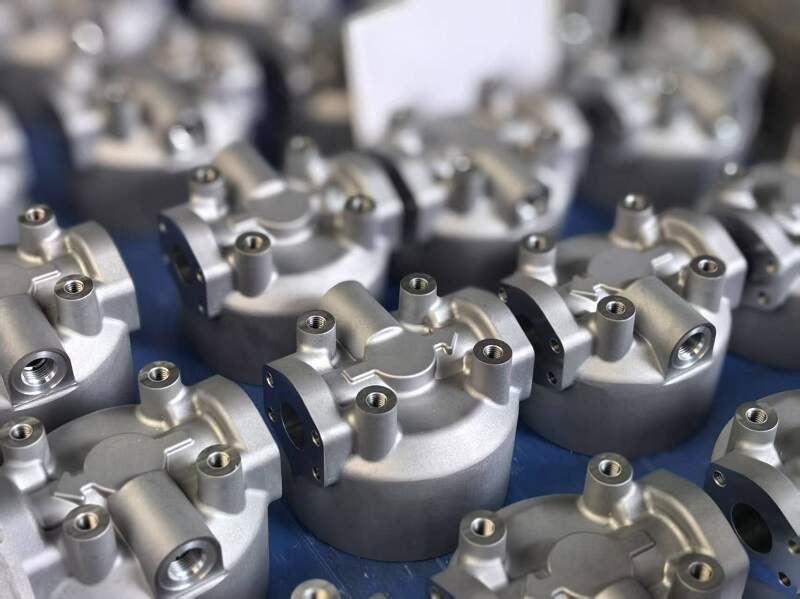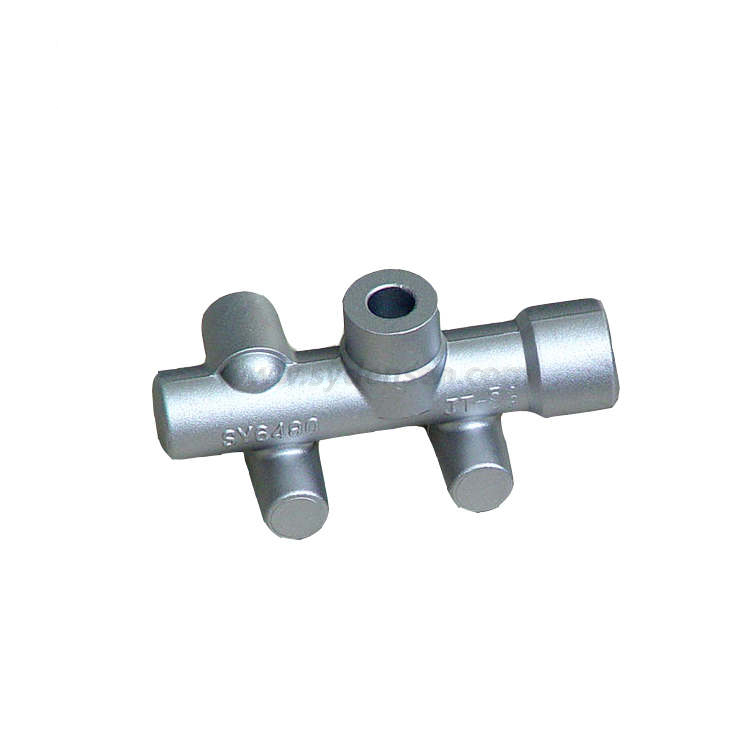Enhancing Performance in Precision aluminum casting Operations
Aluminum Casting Explained: Key Truths and Insights for Market Professionals
Aluminum casting acts as an essential process in modern manufacturing, shaping elements across different fields. Its varied methods, such as sand and die casting, cater to different production demands. The special residential or commercial properties of aluminum alloys enhance their applicability, yet challenges continue to be in maintaining top quality and efficiency. Understanding these elements is important for market specialists. What are the latest innovations and best techniques that can further enhance this process?
Introduction of Aluminum Casting Processes

Trick elements of aluminum casting processes include the preparation of mold and mildews, which might be made from sand, metal, or ceramic products, relying on the meant usage. Furthermore, temperature level control is important to ensure proper melting and solidification of aluminum.
The casting procedure permits for complex styles and can achieve high degrees of dimensional accuracy. Once cooled down, the castings might undergo ending up procedures such as machining or surface area therapy to satisfy details performance standards. In general, aluminum casting acts as a versatile production method, effectively fulfilling the diverse requirements of different markets.
Kinds Of Aluminum Casting Techniques
In the domain of aluminum casting, different techniques are used to accomplish various results. Sand casting techniques provide versatility and cost-effectiveness for intricate forms, while die casting processes provide high precision and efficiency for mass production. Recognizing these techniques is necessary for choosing the appropriate strategy based upon project demands.
Sand Casting Techniques
Sand casting methods stand for an essential method in aluminum casting, where sand is utilized as a mold and mildew product to shape molten steel. This process entails creating a pattern from the wanted component, which is after that placed in a sand mix to develop a mold. The sand is compacted around the pattern, and after removal, it produces a tooth cavity in the form of the component. Molten aluminum is poured into this tooth cavity, allowing it to strengthen and cool down. One substantial advantage of sand casting is its flexibility; it can suit huge components and complicated forms. Additionally, the products used are fairly affordable, making it an accessible alternative for numerous production applications in the aluminum sector.
Die Casting Processes
Die casting procedures are a prominent approach for shaping aluminum components, utilizing high-pressure strategies to require liquified steel into exactly engineered mold and mildews. This procedure is particularly preferred for its capacity to create complicated forms with tight tolerances and a smooth coating. There are two key sorts of die casting: warm chamber and cool chamber. Warm chamber die casting is suitable for metals with low melting factors, permitting for faster production rates. Alternatively, chilly chamber die casting is excellent for higher melting point metals, needing a different melting heating system. Both techniques boost efficiency and minimize material waste, making them crucial in vehicle, aerospace, and durable goods markets. Comprehending these procedures helps specialists choose the most proper method for their specific applications.
Material Quality of Aluminum Alloys

Stamina and Resilience
Strength and sturdiness are crucial attributes of aluminum alloys that make them ideal for various casting applications. These products exhibit a desirable strength-to-weight ratio, enabling the production of light-weight yet robust components. When it come to tensile strength, certain aluminum alloys can be crafted to endure significant lots without deforming. This residential property is specifically crucial in sectors such as aerospace and vehicle, where performance and safety and security are critical. In addition, aluminum alloys frequently keep their mechanical buildings under diverse temperature level problems, making certain regular performance. The inherent ductility of these alloys also enables efficient shaping during the casting process, making it much easier to produce complicated geometries. Overall, the stamina and toughness of aluminum alloys add substantially to their prevalent use in advanced applications.
Deterioration Resistance Characteristics
While aluminum alloys are valued for their strength and light-weight buildings, their deterioration resistance is an additional important feature that enhances their suitability for various applications. Aluminum naturally develops a protective oxide layer when exposed to dampness, which helps to stop more oxidation. This intrinsic residential or commercial property makes aluminum alloys particularly valuable in environments vulnerable to deterioration, such as aquatic and commercial settings. Furthermore, various alloy structures can affect resistance degrees, with specific alloys especially engineered to boost this particular. Treatments like plating can further improve deterioration resistance by thickening the oxide layer. Understanding the rust resistance of aluminum alloys is essential for industry experts when picking products for jobs requiring durability and long life in tough settings.
Benefits of Aluminum Casting in Manufacturing
Aluminum casting offers numerous advantages in manufacturing, making it a favored selection for various sectors. One considerable advantage is its light-weight nature, which adds to decreased transport prices and improved energy effectiveness in end products. Moreover, aluminum's outstanding thermal and electrical conductivity improves functionality in applications calling for warm dissipation or electric conduction.
The product's ability to be cast into detailed shapes enables style flexibility, decreasing the demand for added machining procedures. Additionally, aluminum casting shows superior rust resistance, bring about longer item lifespans and lower upkeep prices.

Usual Applications of Aluminum Castings
The convenience of aluminum casting enables its widespread use throughout various markets. Common applications include automotive components, like this where light-weight and corrosion-resistant parts, such as engine blocks and transmission real estates, improve car efficiency. In the aerospace industry, aluminum spreadings are used for structural elements, offering toughness without adding considerable weight.
Furthermore, the electric market take advantage of aluminum spreadings in making enclosures and heat sinks, where thermal conductivity is crucial. The durable goods sector also includes aluminum spreadings in products like kitchenware, furnishings, and ornamental things, integrating aesthetics with performance.
The building market uses aluminum spreadings for architectural components, window frames, and components, which give longevity and design adaptability. Overall, the varied applications of aluminum castings highlight their importance in contemporary manufacturing, contributing to advancements in effectiveness and item design throughout numerous fields.
Innovations and Technical Developments
As sectors remain to develop, innovations in aluminum casting innovation are transforming production processes and product capacities. Improvements in 3D printing and additive production have actually allowed the production of intricate geometries that were previously difficult to attain with conventional methods. These modern technologies enable quick prototyping, reducing lead times and costs.
Furthermore, renovations in mold and mildew layout and products have enhanced the casting process by boosting effectiveness and minimizing waste. The integration of smart manufacturing methods, such as IoT navigate to this website gadgets and real-time information analytics, permits much better monitoring and optimization of production criteria, causing higher high quality results.
Moreover, advancements in aluminum alloys give boosted stamina, deterioration resistance, and lightweight residential or commercial properties, accommodating the growing needs in aerospace and auto industries. Jointly, these technologies are not only enhancing productivity but additionally meeting the extensive criteria of contemporary engineering applications.
Finest Practices for Quality Assurance in Aluminum Casting
Making sure premium results in aluminum casting requires adherence to finest techniques that encompass numerous phases of the production procedure. Thorough material assessment is necessary to verify the top quality of aluminum alloys made use of, as contaminations can significantly impact the last product. Applying exact melting and pouring techniques lessens defects; preserving suitable temperatures avoids oxidation and promotes uniformity.
Furthermore, mold layout plays a vital role; using computer-aided design (CAD) can improve accuracy and reduce human error. Normal tracking of the cooling process is vital to avoid bending and contraction. In addition, utilizing non-destructive screening approaches, such as ultrasonic or X-ray evaluations, helps recognize interior defects without harming the parts.
Ultimately, establishing a responses loop with engineers and operators cultivates continual renovation, guaranteeing that top quality control procedures progress alongside technical innovations. By adhering to these best methods, suppliers can enhance the dependability and efficiency of aluminum castings.
Regularly Asked Questions
What Are the Environmental Impacts of Aluminum Casting?
The environmental effects of aluminum casting include considerable energy usage, greenhouse gas emissions, and possible water air pollution from factory procedures. In addition, bauxite mining for aluminum ore can lead to environment devastation and soil deterioration.
Exactly How Does Aluminum Casting Contrast to Various Other Metal Casting Processes?
Aluminum casting usually provides benefits in lightweight parts and deterioration resistance compared to various other processes, such as iron or steel casting, which might supply greater toughness however lead to larger and less corrosion-resistant products. - Precision aluminum casting
What Prevail Issues in Aluminum Castings and Their Causes?
Typical issues in aluminum castings include porosity, shrinkage, and additions. Reasons often site link originate from improper putting techniques, insufficient mold style, or contamination of the liquified metal, affecting the end product's integrity and performance.
What Safety and security Safety Measures Should Be Taken During Aluminum Casting?
Throughout aluminum casting, necessary safety and security preventative measures include using safety equipment, guaranteeing correct ventilation, keeping a tidy work space, dealing with liquified metal with treatment, and adhering to well-known procedures to minimize risks of burns, breathing threats, and crashes.
How Can I Improve the Efficiency of My Aluminum Casting Workflow?
To improve efficiency in aluminum casting procedures, one should optimize mold style, streamline product handling, use automated processes, conduct regular upkeep on equipment, and buy worker training to enhance skills and productivity.
Numerous techniques exist, aluminum casting incorporates several primary processes that cater to different applications and requirements. Key aspects of aluminum casting procedures consist of the preparation of mold and mildews, which might be made from sand, metal, or ceramic products, depending on the meant use. Sand casting methods represent an essential approach in aluminum casting, where sand is utilized as a mold material to shape liquified metal. As industries continue to evolve, advancements in aluminum casting modern technology are changing production processes and item capabilities. Guaranteeing premium outcomes in aluminum casting calls for adherence to best methods that incorporate different stages of the production procedure.